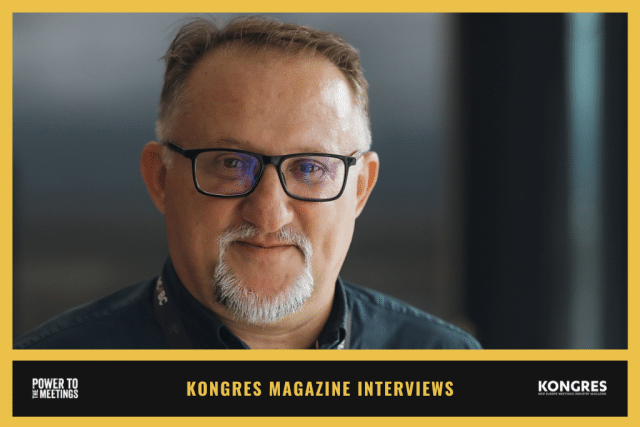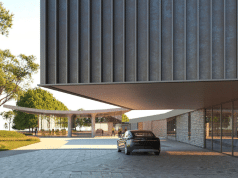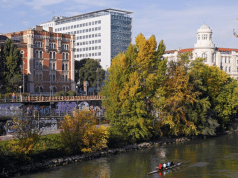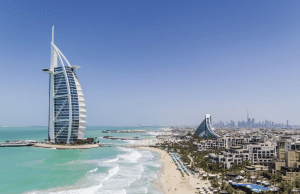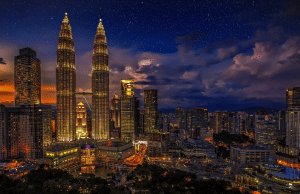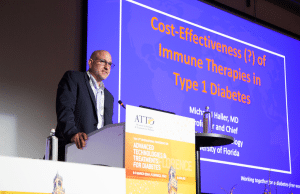Q1: In August, your country experienced the worst natural disaster in history. What happened?
In recent years, we have been experiencing more extreme weather events that seem to be getting more intense each time. It is easy to see that future summers in Europe will be marked by recurring extreme weather conditions.
In Slovenia, we experienced catastrophic weather already in July. A tornado and horrendous storms with hail ravaged a part of the country. Consequently, the rivers rose, while additional rainfall just before the catastrophe exacerbated the problem. Along the Alpine barrier, uncommonly warm air from the Meditteranean clashed with cold weather fronts from the North. That caused over 250 litres of rainfall per square metre to fall in two days. That exceeds the amount of rain that fell in the summer of 2022 by two.
According to experts, we witnessed a once-in-a-five-hundred-years flood, but we were only ready for a once-in-a-hundred-years one. The disaster has shown that engineers must plan buildings and infrastructure centuries in advance. In my opinion, the catastrophe is undisputable proof of climate change. Until now, infrastructure was planned without considering its effectiveness in the long term.
Q2: You described this extreme weather event as an “environmental Armageddon” on LinkedIn. Why?
I mentioned Armageddon because of the unimaginable speed and magnitude of the floods. We had never experienced such devastating and powerful floods in Slovenia. The situation was reminiscent of the biblical end of times. As I live near the confluence of two rivers, Sava and Kamniška Bistrica, I have grown accustomed to occasional floods in autumn and spring, yet almost never in the summer. Even those of us used to floods were caught off guard by the sheer intensity of the flooding. In a few hours, the otherwise steady-flowing Kamniška Bistrica River demolished everything obstructing its way. From a relatively calm river, it transformed into an alarming torrent. I am worried that this flooding will not be the last. In my opinion, such natural disasters will occur more frequently, forcing event organisers to consider them beforehand.
Q3: Which consequences do the floods have for Slovenia’s event infrastructure?
The Slovenian meetings industry is concentrated in Ljubljana, where 70% of events take place. Luckily, Ljubljana was not affected by the floods this time, and the infrastructure weathered the storm. Portorož, Bled, and Maribor, hubs of the meetings industry, survived largely unscathed. Smaller villages in the heart of the Kamnik-Savinja Alps, famed as incentive destinations, were most affected. The floods ravaged two picturesque medieval towns – Kamnik and Škofja Loka. Savinja Valley was terribly devastated. Although these smaller destinations do not have larger meeting venues, they are popular team-building outposts. The rough estimate is that the core of Slovenia’s event infrastructure has escaped unscathed, but the floods did devastate important outdoor venues in affected areas. For instance, Območje 70 in Kamnik was nearly destroyed, alongside other outdoor venues near rivers.
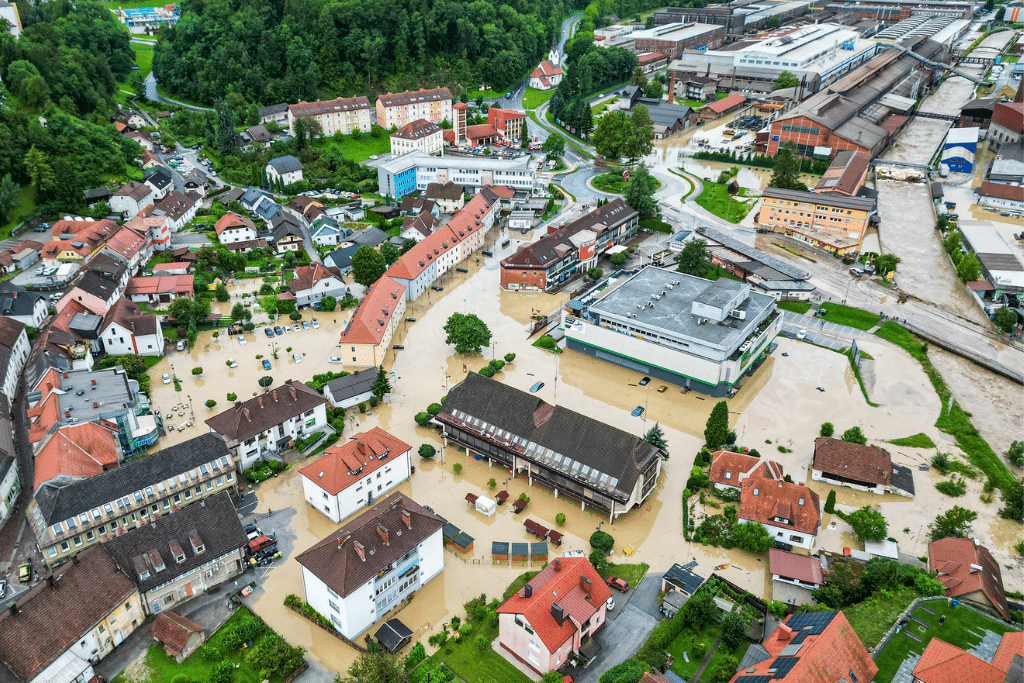
Q4: Have business events and participants been affected?
To elaborate on my previous answer, attendees of business events were not in danger. Most business events took place in Ljubljana. However, the weather did impact the organisers of summer music festivals. During that week, event organisers expected to host the most renowned festivals in the country. Unfortunately, the MetalDays festival had to end prematurely, and the visitors had to be evacuated from the venue. Brave firefighters and members of the civil protection service replaced metal fans. The situation was similar along the Kolpa River, where organisers had to cancel the Castle Festival. Kamnik also had to cancel its annual Kamfest. Several smaller festivals were scheduled across the country but were all cancelled. The disaster hit some of Slovenia’s most idyllic towns, home to popular meeting venues. Luckily, no event participant or festival-goer lost their life.
Q5: To what extent are Slovenian event professionals affected?
As said, crucial meeting infrastructure was untouched. Two main exhibition centres in Ljubljana and Celje were unaffected. Portorož, Bled, and Maribor also survived. Short-term, there is not too much damage, barring cases of cultural institutions and venues where halls were flooded. The extent and impact of the floods are still a mystery, but the indirect damage caused by the Armageddon is immense. First, the public infrastructure, especially roads, must be repaired. Numerous bridges have collapsed, too. Event organisers can return only once the infrastructure is restored. I am still positively impressed by the goodwill of colleagues and the solidarity of all. Last week, I helped restore one of the affected outdoor venues. In one day, we achieved a lot together, and the owner optimistically predicted that events would return by the end of August. I personally believe his words. Slovenians do not give up easily, so I do not doubt we will restore affected parts of our country.
Q6: How can the events industry/community help?
At the moment, European aid schemes are working well. In Slovenia, we are grateful for this help. I am even happier to see solidarity among Slovenians. It was on display during Solidarity Day, on Monday, 14 August 2023. Numerous volunteers from Slovenia and abroad came to help those affected. Nevertheless, financial help will matter most in the following months.
Numerous event organisers already donated some of their income to those affected by the floods. At the moment, that seems to be the best choice for helping out. One of the most innovative suggestions came from my colleague, who owns a team-building agency. He invited companies to invite their employees to jointly help restore affected areas instead of organising classic team-building programmes. Numerous companies responded to the call.
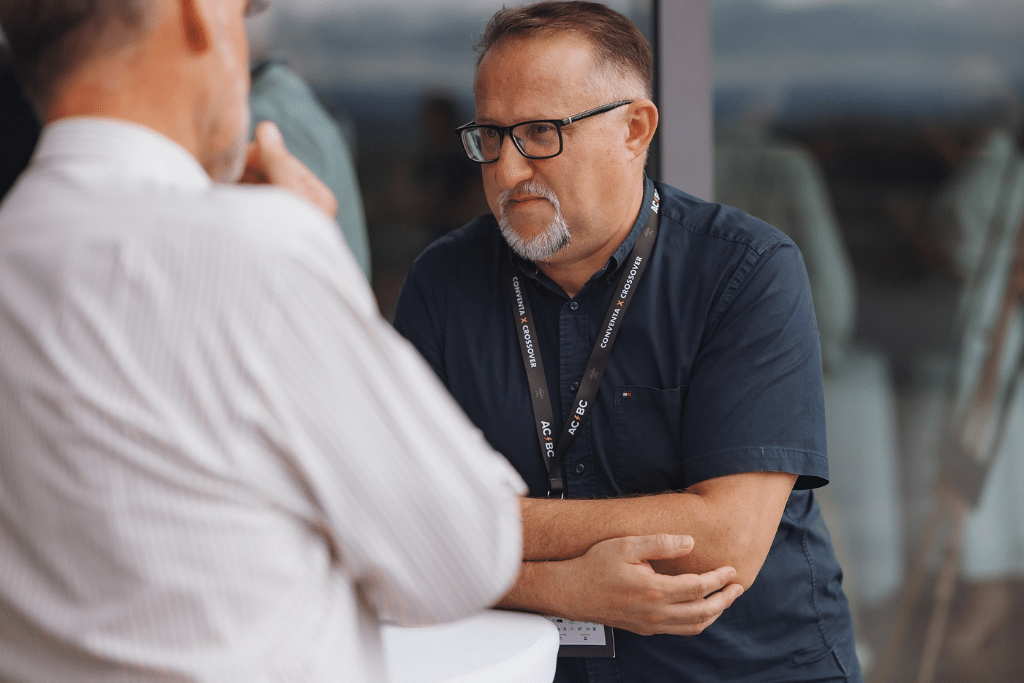
Q7: Climate researchers assume that extreme weather will increase with rising temperatures. According to data from the Intergovernmental Panel on Climate Change (IPCC), the Mediterranean region is already heating up more than the average of the earth’s regions. Are you concerned that extreme weather events will increase in Slovenia?
Debates on adapting to nature seem to be without a final answer. This summer has shown that in full effect, as nature showed us its brutal side. The fact remains that extreme weather is occurring not only in Slovenia but across Europe. The same weekend floods hit Norway and Sweden. I personally believe this is a direct repercussion of global warming. “No man is an island, entire of itself; every man is a piece of the continent, a part of the maine”, wrote Ernest Hemingway. I carry this thought with me at every step, as it illustrates global warming. We must not underestimate the situation, and I hope we have learned our lesson this summer.
It goes without saying that the Mediterranean is the epicentre of climate change. The notorious 42nd north parallel will divide the world in two. Below it, wildfires, heat waves, hurricanes, droughts and floods will ravage the area. Above it, event organisers will find a new event haven. Slovenia is located between the 45th and 47th north parallel, on the edge of the critical area. Hence, we can expect tumultuous change. On ICCA’s ranking of the best European destinations, four major Mediterranean destinations make the top ten (Spain, Italy, France, Greece). Turkey and Croatia make the top twenty destinations. Unsurprisingly, the Mediterranean is a popular destination. Yet, for how long?
Q8: Are you worried that the event business is shifting to the north of Europe during the summer months from June to August?
Scientists had predicted extreme weather decades ago. It seems we did not take their warnings seriously enough. Even though nature seemed to have recuperated and regenerated itself in the corona period, this summer season has shown that was merely an illusion. Following the revival of the economy in the post-corona period, greenhouse gases skyrocketed. Impotent politicians sadly do not have the skills to react to current problems, as the war in Ukraine showed. We are amid a tumultuous, dangerous, and uncertain epoch marked by increased militarisation and military conflicts. Scientists predicted climate refugees decades ago. As a result, events will have to migrate, too. If we do not stop climate warming, events will move north.
Above all, event organisers will have to consider event insurance. We conducted a short LinkedIn survey about the topic last week. We asked event organisers the following question: How to protect your outdoor event/festival?
The answers showed the following picture:
– 36 % Plan B
– 34 % Weather action plan
– 20 % Force majeure clause
– 9 % Event insurance
I believe a combination of all four will be the only solution for future events. We must consider event insurance with seriousness.
Q9: The global average temperature for July 2023 is confirmed to be the highest on record for any month by the Copernicus Climate Change Service (C3S). Climate and weather have a major impact on the events industry. Extreme weather conditions such as heavy rain, storms, heat and drought can endanger events. Has this already been addressed at the Conventa trade show or will it be addressed in the future?
Conventa was a pioneer in sustainable event organisation. At the Bea World Festival 2022, where the best global events compete for gold, Conventa won first place in the category of green and sustainable events. Conventa’s groundbreaking 7R model convinced the esteemed international jury, who saw the methodology as a credible solution for organising future events sustainably. Conventa’s model shows that complex trade shows can be organised in an environment-friendly way and remain responsible to society and attendees. A central part of Conventa’s transformation is addressing climate change and measuring the event’s carbon footprint. That enables us to clearly identify measures to reduce greenhouse gas emissions and improve and follow changes. Conventa also has tremendous power to spread awareness through its communication channels. We see the trade show as a booster of messages regarding the necessity of climate measures. Considering the responses, we are on the right path and plan to spread the message. Conventa has been walking down the path of sustainability since 2009, and we are proud to see other event organisers following suit.

Q10: “The extreme weather which has affected many millions of people in July is, unfortunately, the harsh reality of climate change and a foretaste of the future,” said World Meteorological Organization’s Secretary-General Prof. Petteri Taalas. He added: “The need to reduce greenhouse gas emissions is more urgent than ever before. Climate action is not a luxury but a must.” Do you agree?
I absolutely agree. Undoubtedly, the constant growth in the consumption of natural resources has brought modern civilisation to the brink of extinction. The Earth Overshoot Day is a testament to that. This year, it falls on 2 August, a symbolic date, just before the Slovenian Armageddon. Earth Overshoot Day is a date that marks when humanity’s demand and consumption of natural resources exceeds Earth’s biocapacity. In Slovenia, the Overshoot Day happened on 18 April, while in less-developed Albania, it will happen on 3 November. We must understand that 60% of Slovenia’s environmental footprint comes from burning fossil fuels and greenhouse gas emissions. To reach the goals of the Paris Agreement, we would need to move the date by 19 days per year in the next seven years. All of the mentioned reminds us that the time to act is now. Event organisers must become aware of that. All of this begs the question: how much will sustainable development cost us if we do not start adopting it in practice?
Destinations and providers who insist on constant economic growth are problematic. No activity can go beyond the limitations of natural resources. That is why we need a new social-economic paradigm that will teach us how to create events that follow natural limitations. These include limits on locally available resources. A time is coming when zero growth or minimal growth will be better than endless growth.
In any case, the meetings industry has a challenging task ahead. We must significantly reduce the use of energy, materials and environmental and social resources at events. In addition, we will have to consider the bearing capacity of the environment and ecosystems without endangering future destinations. We must build a regenerative, sustainable and inclusive meetings industry. Less is more, right?
Q11: If so, what are you, as a trade show organiser, doing to reduce greenhouse gas emissions?
Conventa is one of the few international events measuring its carbon footprint systematically. As the organisers, we teamed up with the internationally acclaimed company, ClimatePartner. This year’s carbon footprint has shown that systematic work can help us reduce the carbon footprint of transport. It represents the most problematic aspect of event organising. We thus devoted the most attention to transportation and successfully reduced it by 8.9% (from 90.7% in 2022 to 81.8% in 2023). The entire carbon footprint of the event is comparable to the daily carbon footprint generated by 5,415 German citizens or 387,129 kilometres travelled by personal vehicle.
Conventa is a booster of change and an ideal test lab for innovation in sustainability and regenerative transformation. We look for more than constant economic growth and multiplicative financial effects. We seek to create a trade show with broad social benefits, creating prosperity for the community of event organisers.
Q12: Any other thoughts? How to go from words to actions in our industry?
In recent years, we have encountered plenty of greenwashing in our industry. It remains a fact that by planting trees and recycling badges, we will not solve the challenges faced by our industry. As we believe we must go from words to actions, we developed the first global standard, a sustainability ranking and certificate for organising sustainable events – the Green Meetings Star. Through Conventa’s sustainable transformation, we discovered no singular holistic solution for sustainable event transformation exists. Due to the complexity of the task at hand, we knew there were only partial solutions on the market, including over-simplified carbon footprint calculators. That is why we decided to develop our own solution in partnership with the Slovenian NGO Umanotera and one of the leading IT companies in the region, Arctur.
Together we set the goal of making the Green Meetings Star the world’s most trusted events sustainability rating. We made a decision to focus on events of all types and sizes, not just companies that organise events, as events are unique, and many factors influence their sustainability.
The complexity of the system is illustrated by what Green Meetings Star includes:
– 16 evaluation matrixes (94 obligatory criteria and 241 recommendable measures)
– 15 forms to calculate the carbon footprint
– 3 standards for subcontractors (venues, catering, multimedia equipment)
– 1 unique carbon footprint calculator
– 1 GDS Regenerative calculator and compensator
– 1 handbook with precise guidelines to meet obligatory criteria
The entire evaluation process is digitalised. We are testing the beta version and plan to launch the final version in November 2023. We are proud of the so-called SDG regenerative criteria that event organisers must meet. The entire system also complies with the requirements of the GHG protocol and GRI standards. Because of the holistic methodology, our solution has gained recognition among corporations that organise events. Our sustainability report will hopefully become the green standard in the industry. In short, our Green Meetings Star is our contribution and legacy en route to a sustainable meetings industry.


